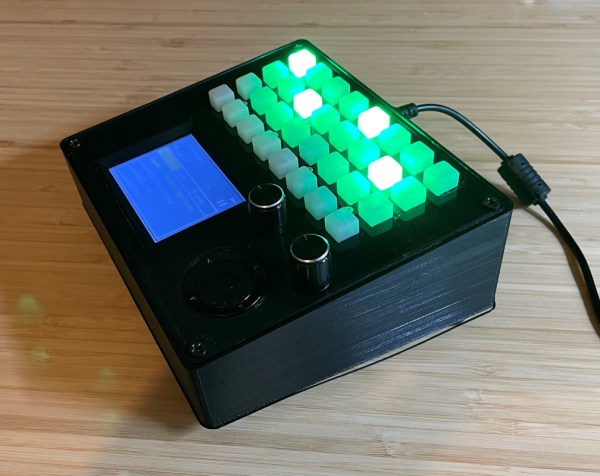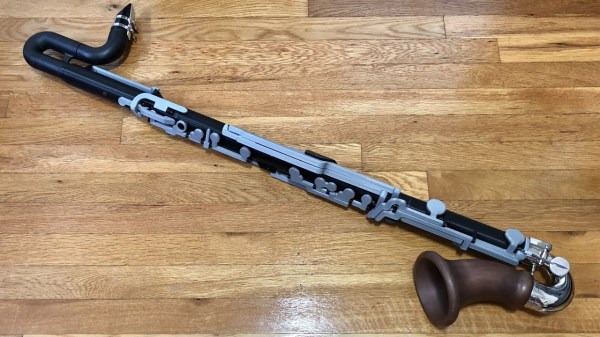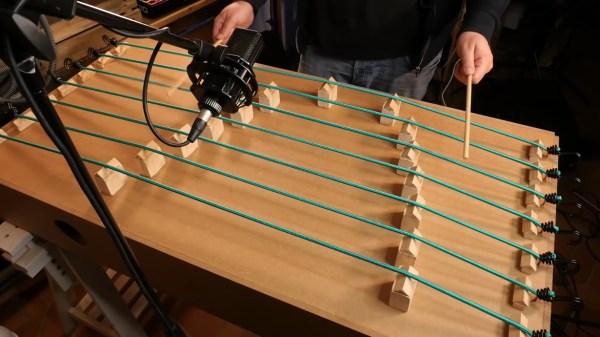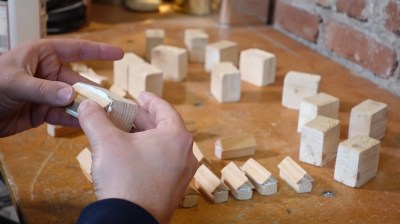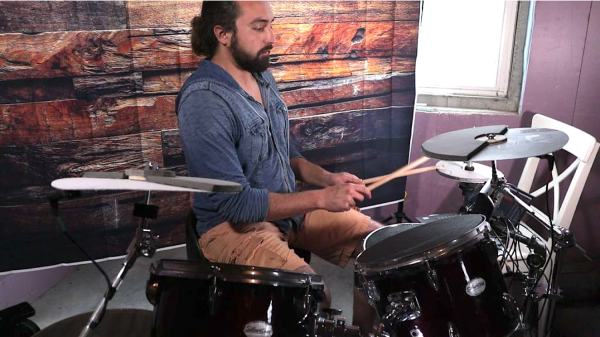For better or worse, the fundamental design of guitars has remained familiar since they electrified around a century ago. A few strings, a fretboard, and a body of some sort will get you most of the way there for an acoustic guitar, with the addition of electromagnetic pickups and wiring for electric variants. However, technology has advanced rapidly in the last 100 years outside the musical world, so if you want to see what possibilities lie ahead for modernizing guitars take a look at the Cyberbass created by [Matteo].
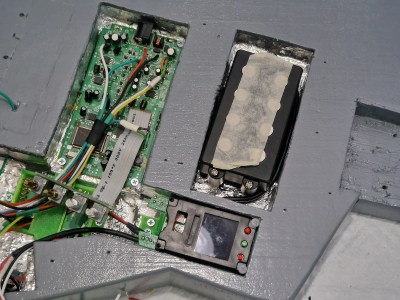 The guitar starts its life as many guitars do: with a block of wood. One of the design goals was to be able to use simple tools to build the guitar, so the shape of the instrument was honed with a Japanese hacksaw and the locations for the pickups and other electronics were carved out with chisels.
The guitar starts its life as many guitars do: with a block of wood. One of the design goals was to be able to use simple tools to build the guitar, so the shape of the instrument was honed with a Japanese hacksaw and the locations for the pickups and other electronics were carved out with chisels.
The neck of the guitar was outsourced since they take some pretty specialized tools to build, so simply bolting it to the body takes care of that part of the build, but [Matteo] had a few false starts setting the bridge in the exact location it needed to be.
Luckily he was able to repair the body and move the bridge. With the core of the guitar ready, it was on to paint and then to its custom electronics. [Matteo] built in not only a set of pickups and other common electric guitar parts but also integrated a synth pedal into the body as well as including a chromatic tuner.
With everything assembled and a few finishing touches added including a custom-engraved metal signature plate, the Cyberbass is ready to go on tour. [Matteo] learned a lot about guitar building in general, as well as a few things about electronics relating to musical instruments (including how expensive tuners work just as well as cheap ones).
Continue reading “Cyberbass Brings Bass Guitar To Modern Era”




